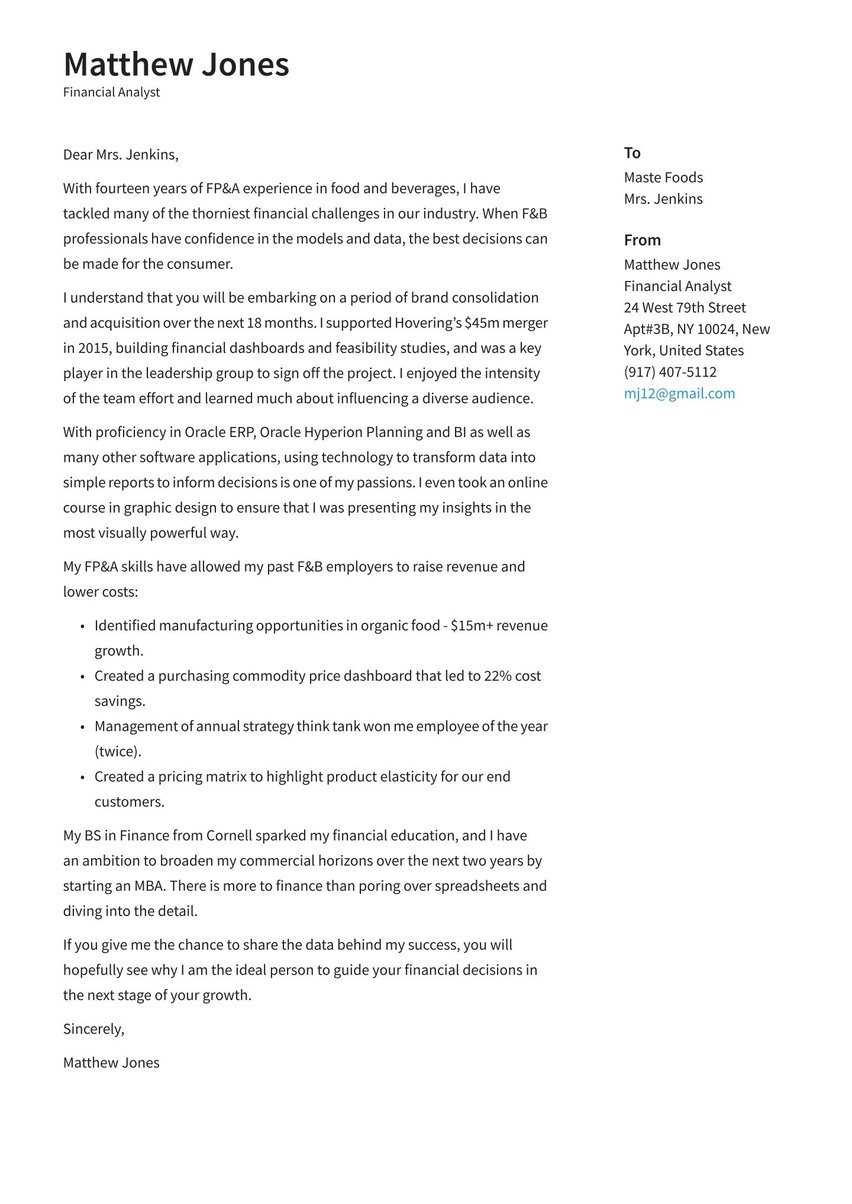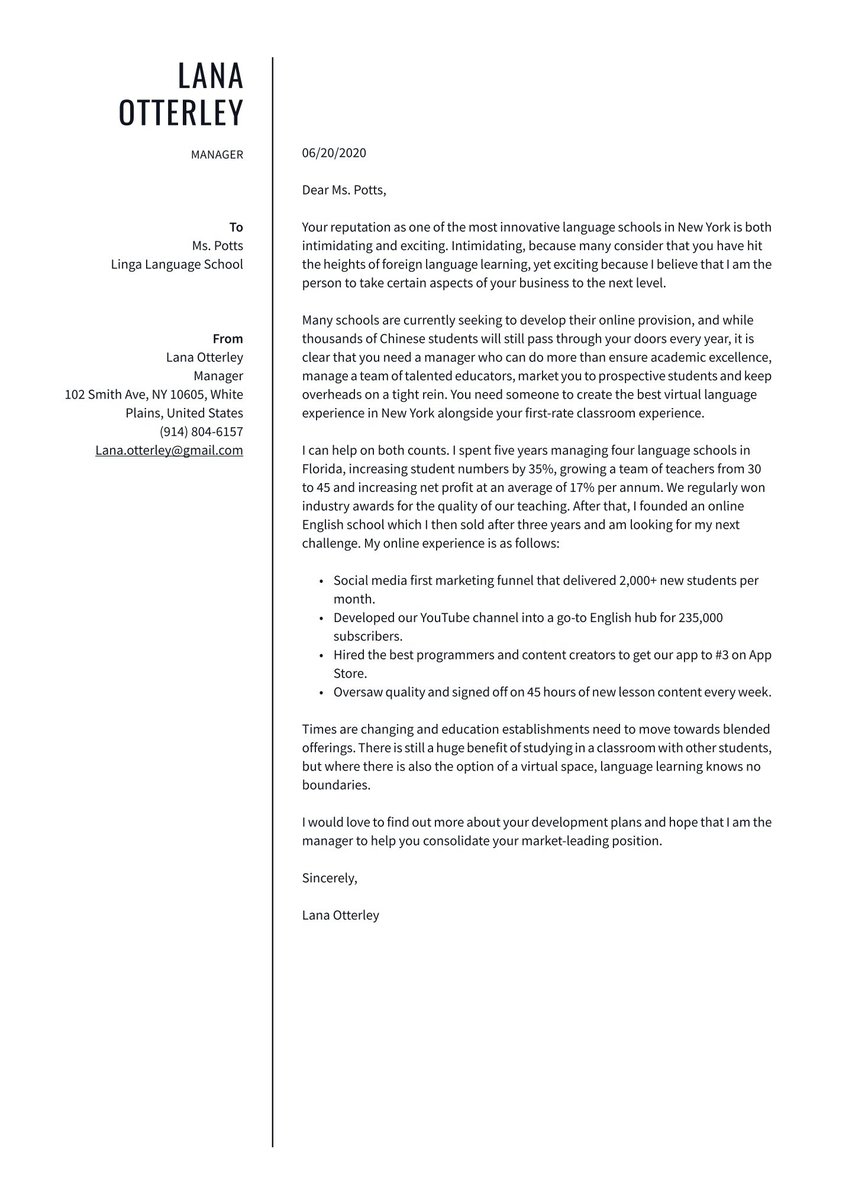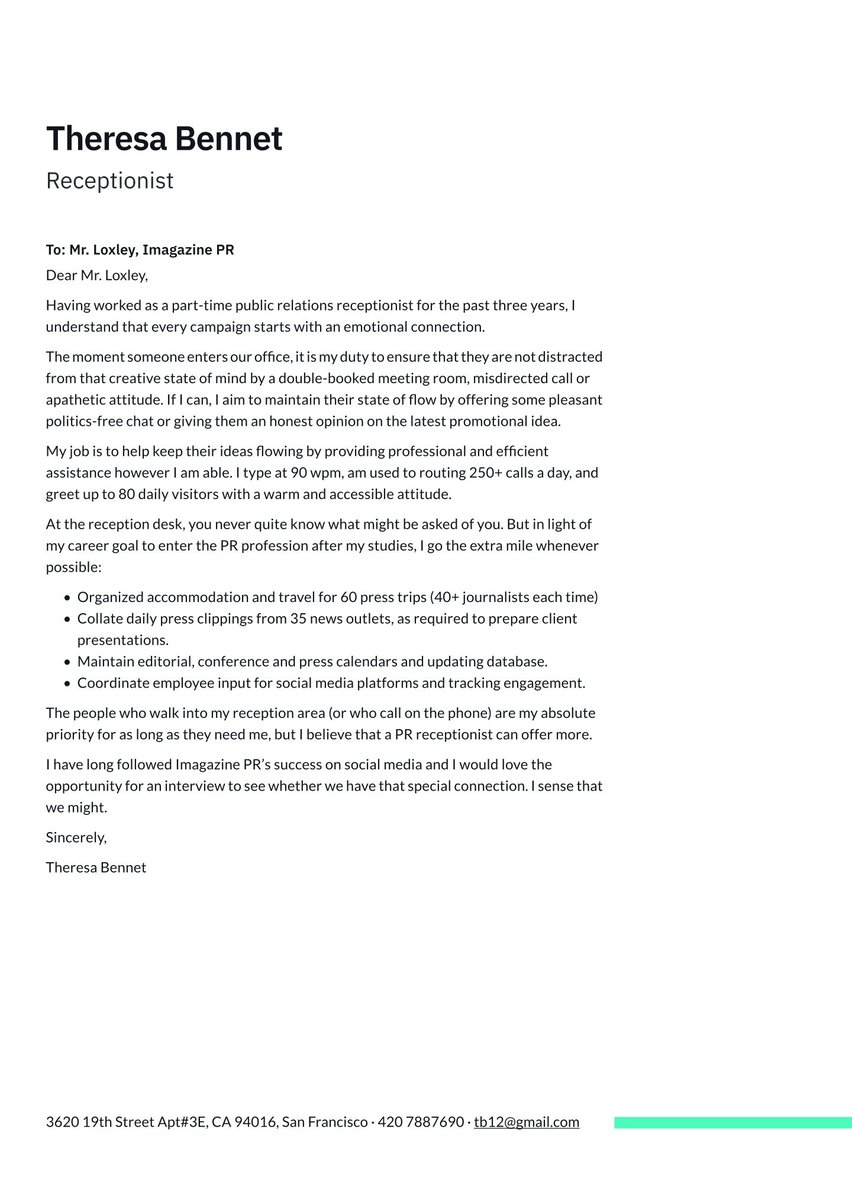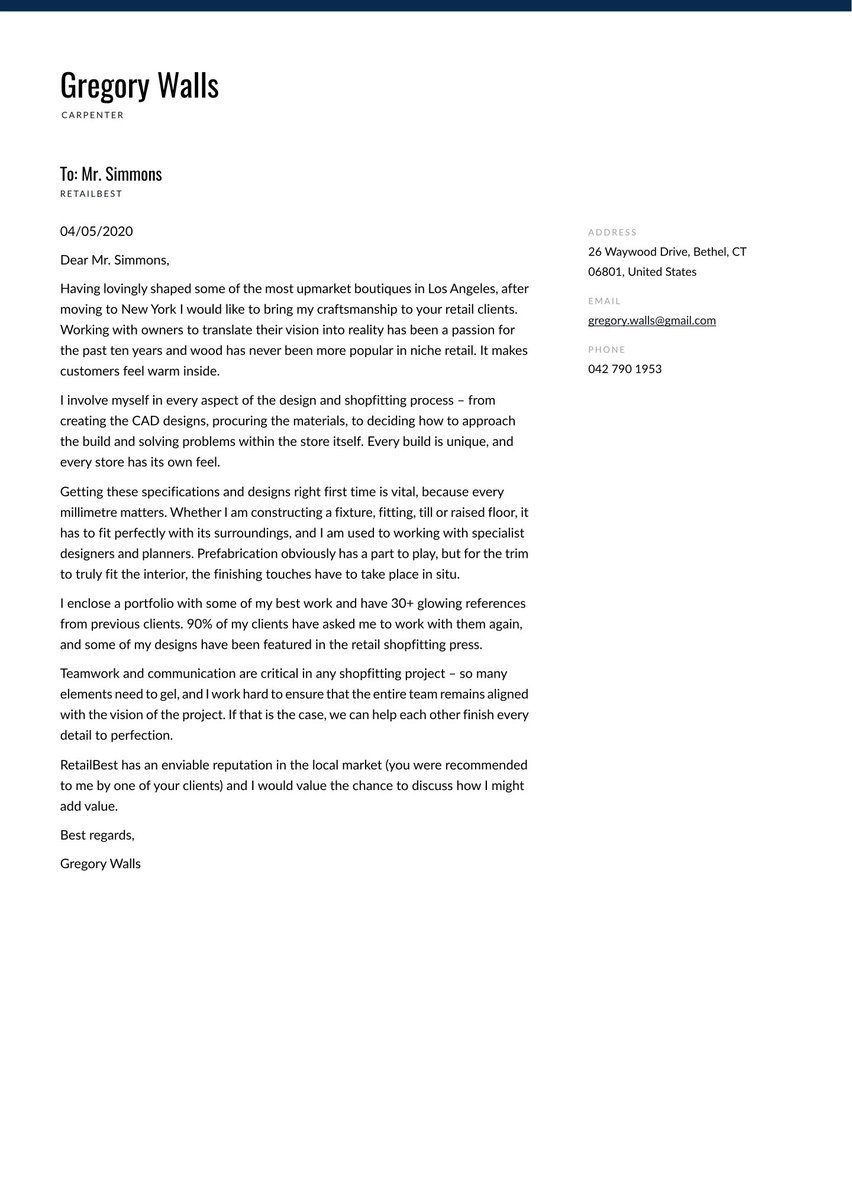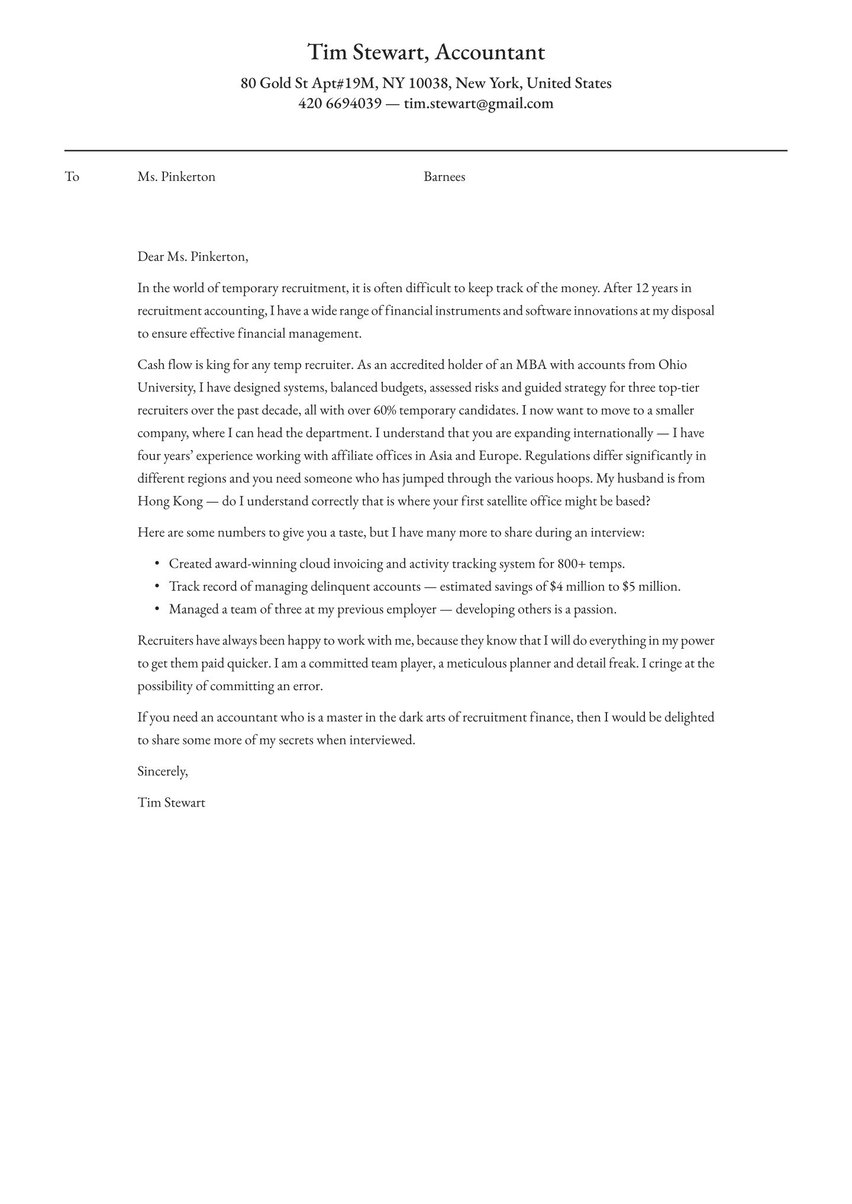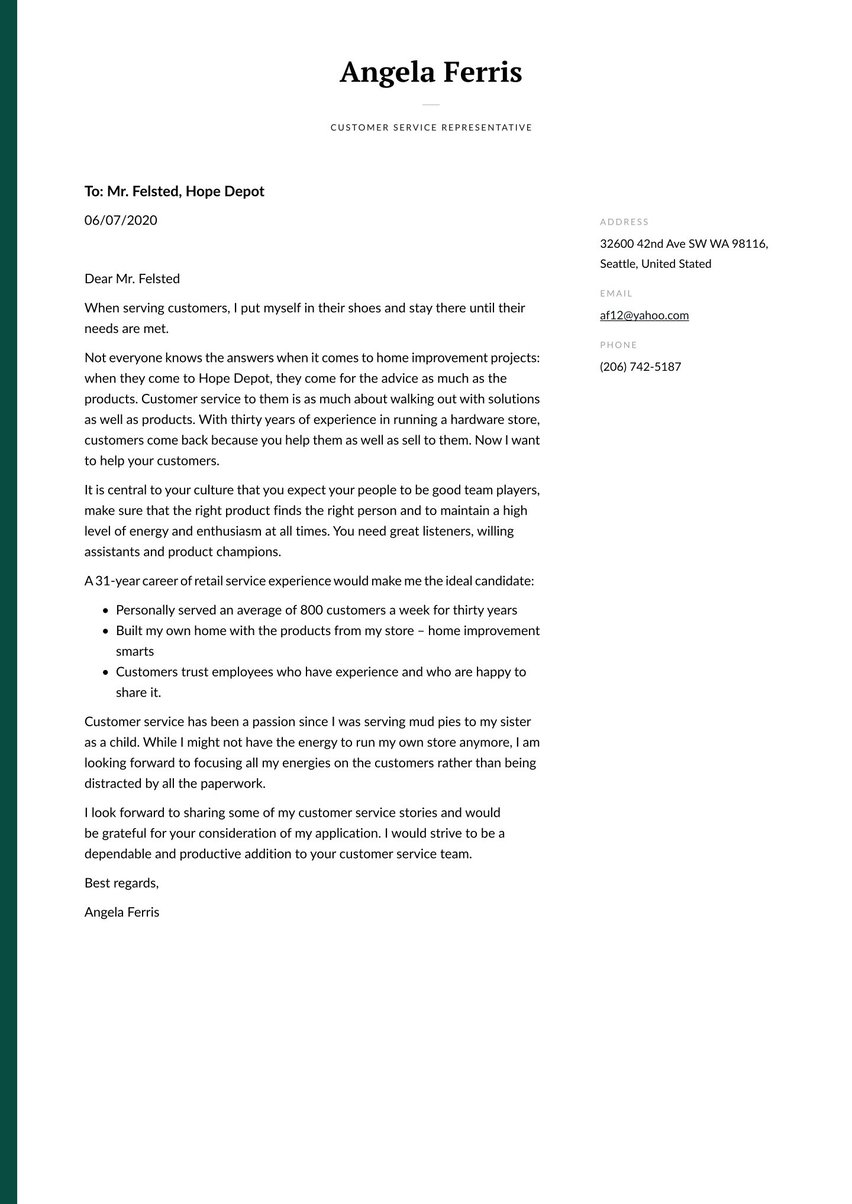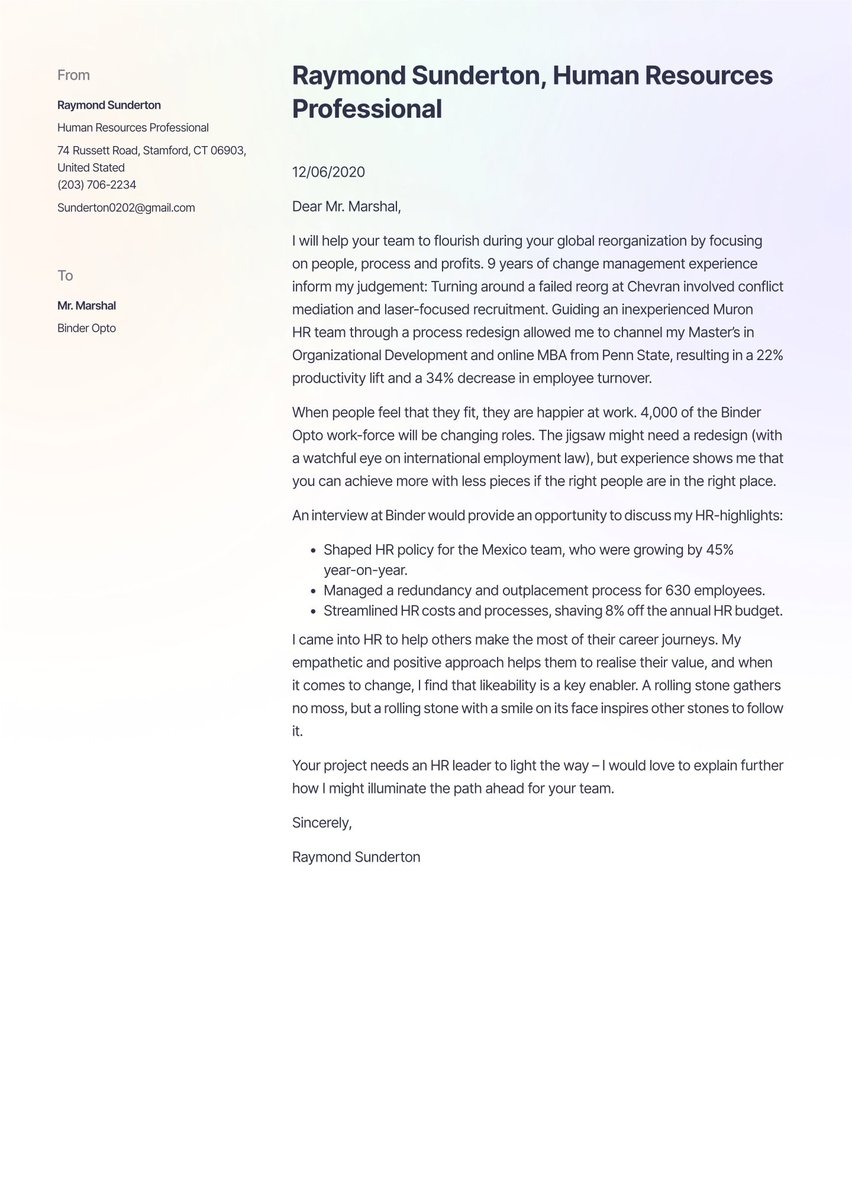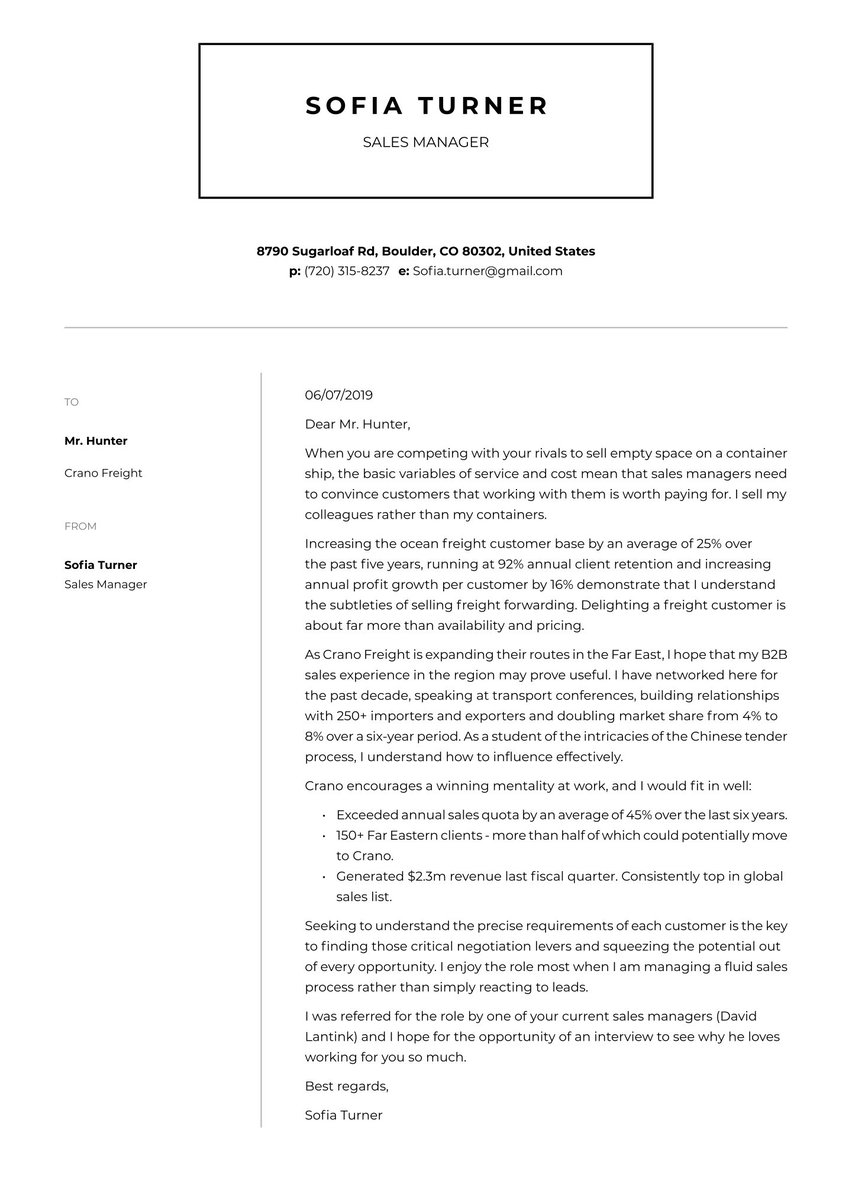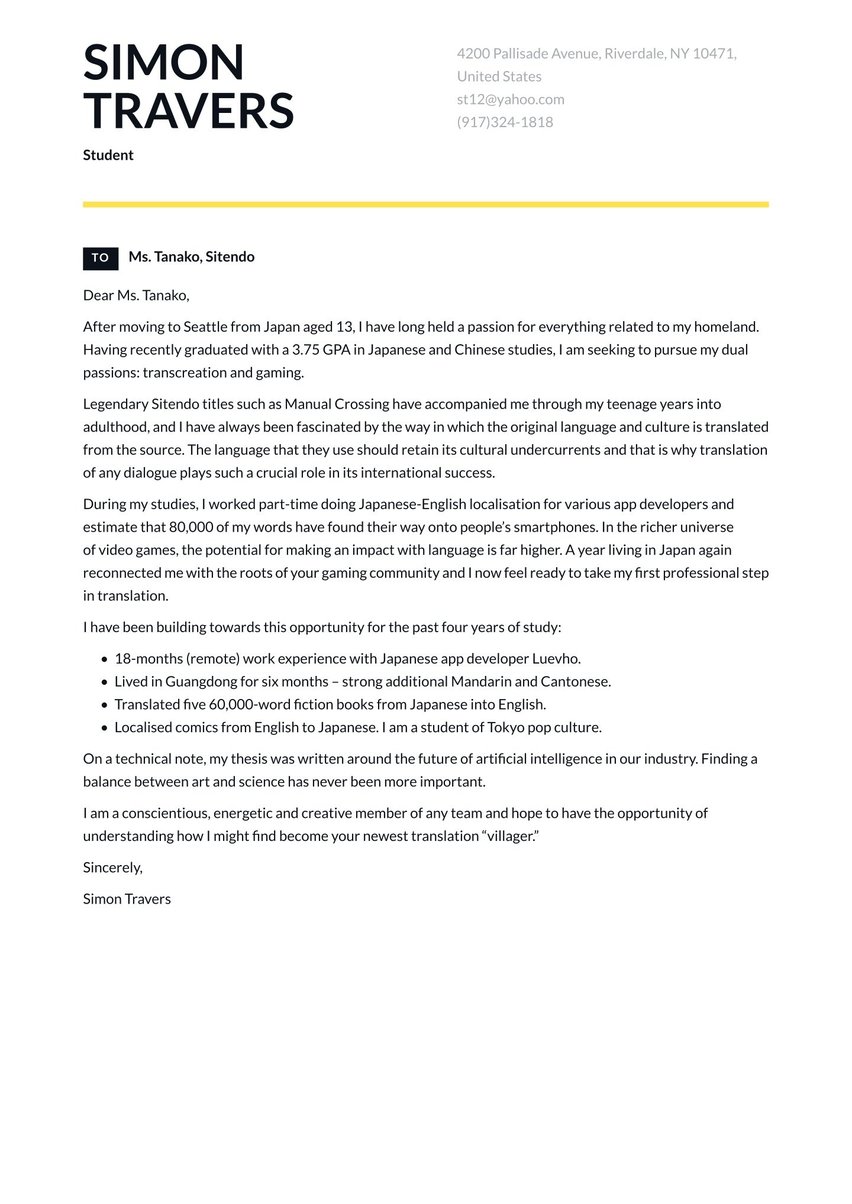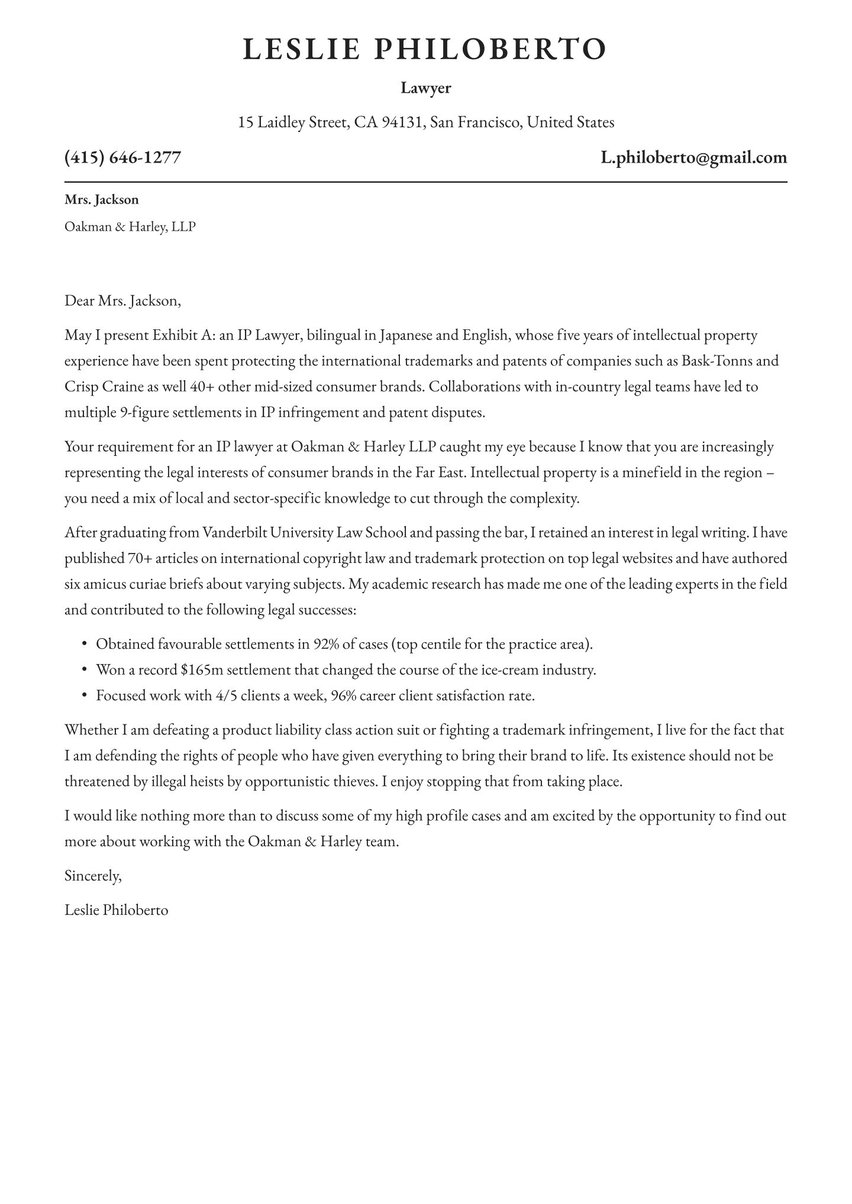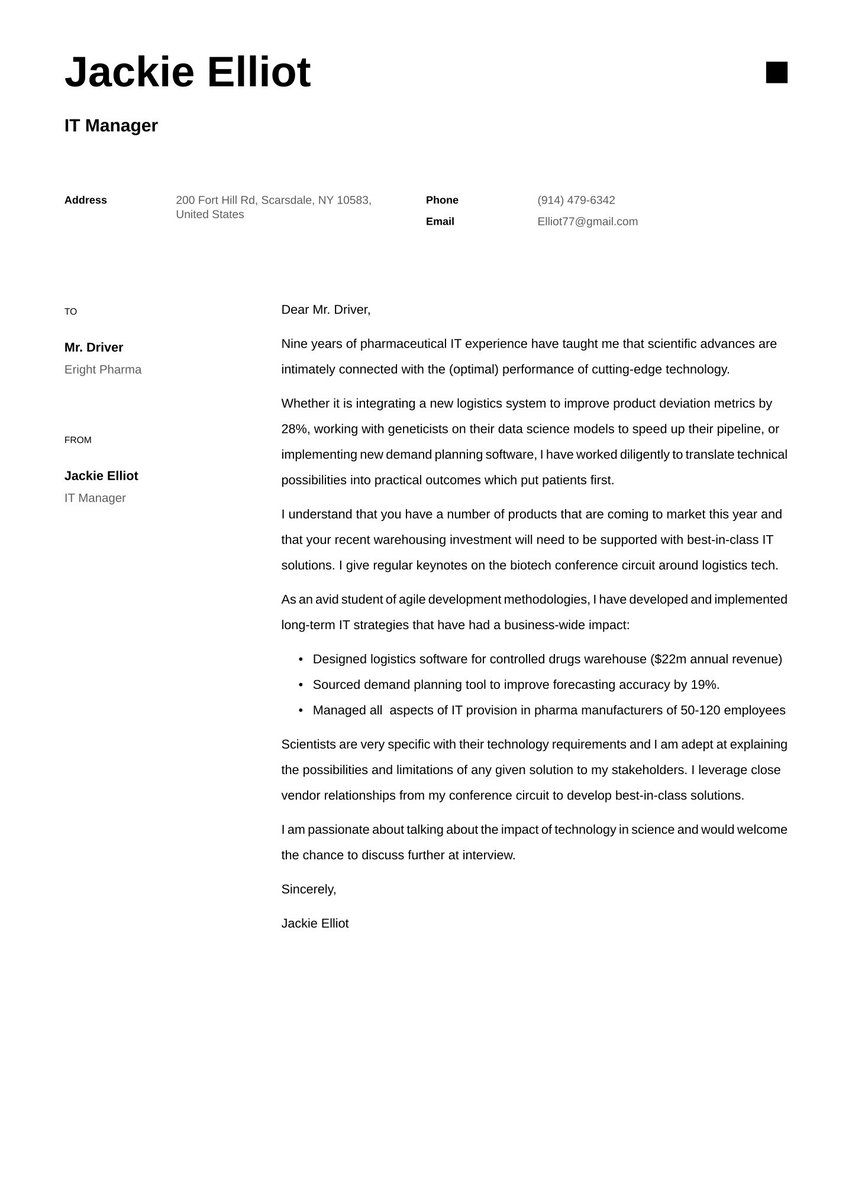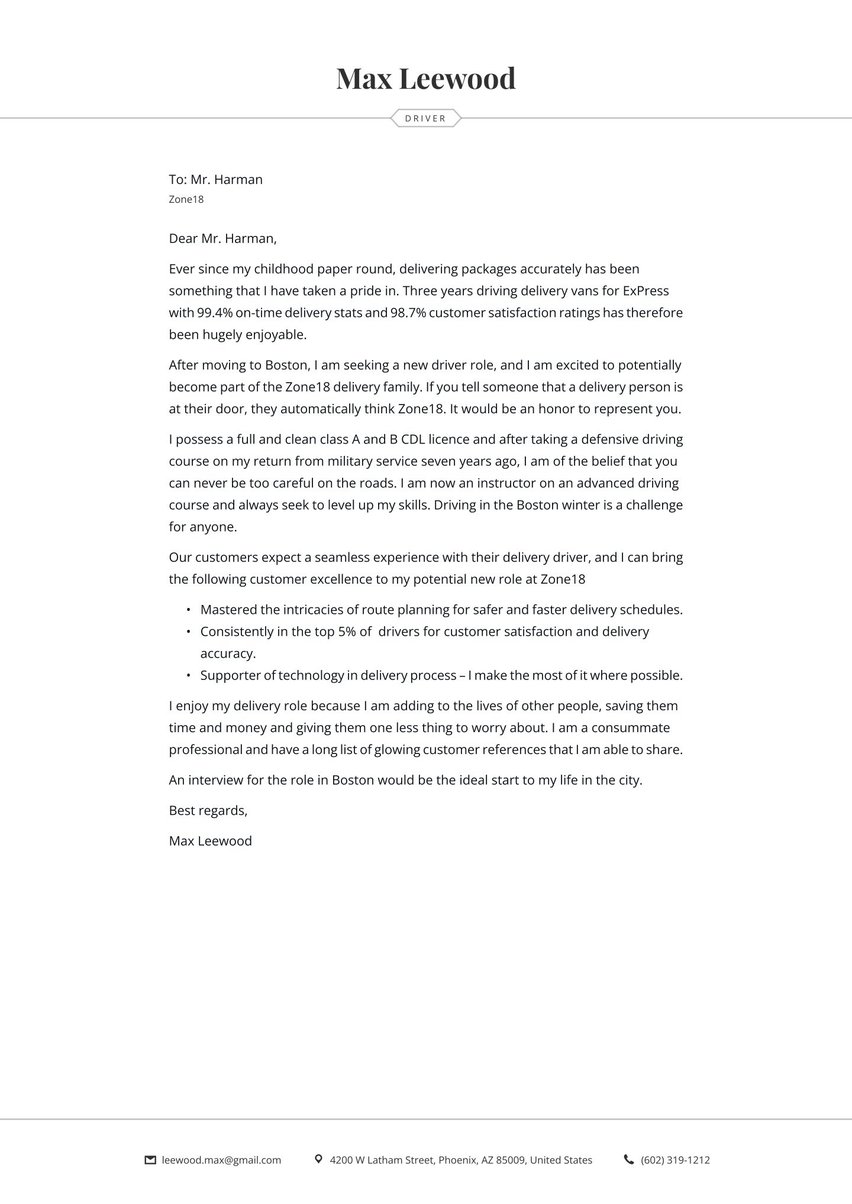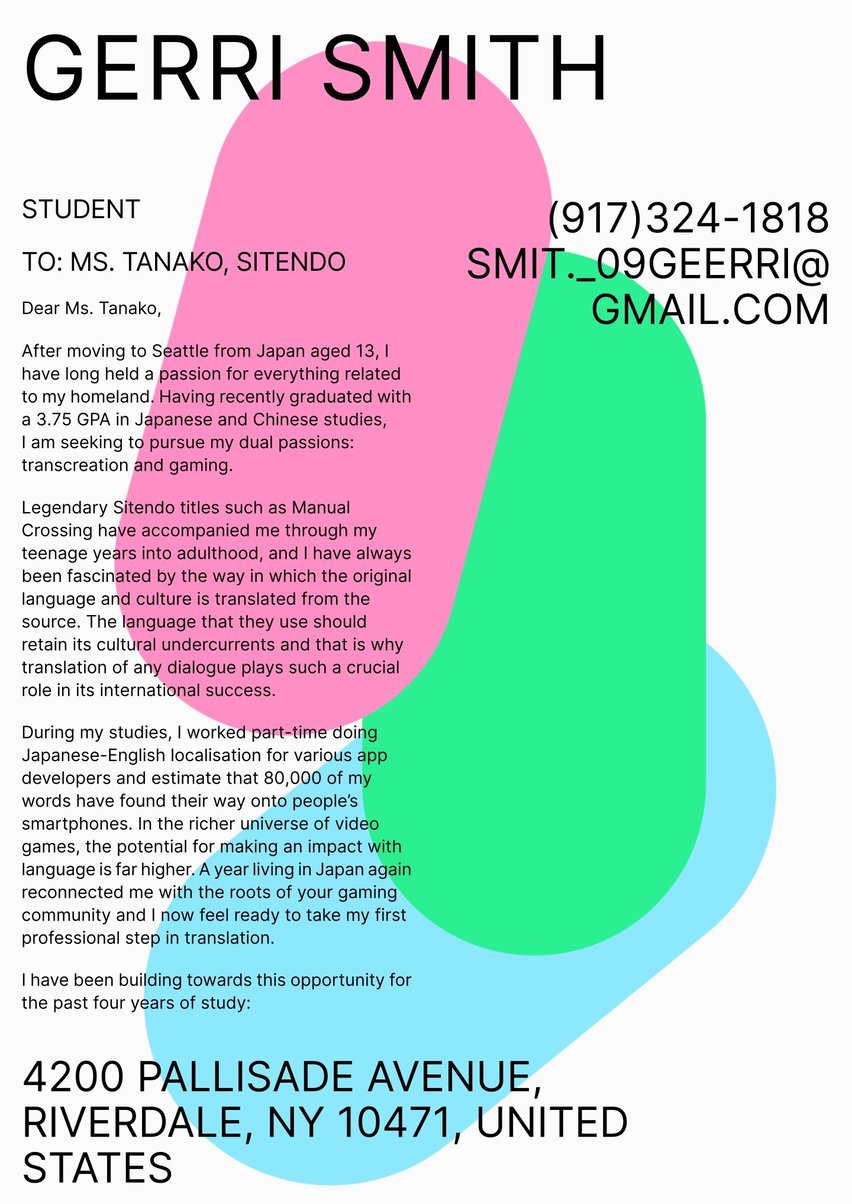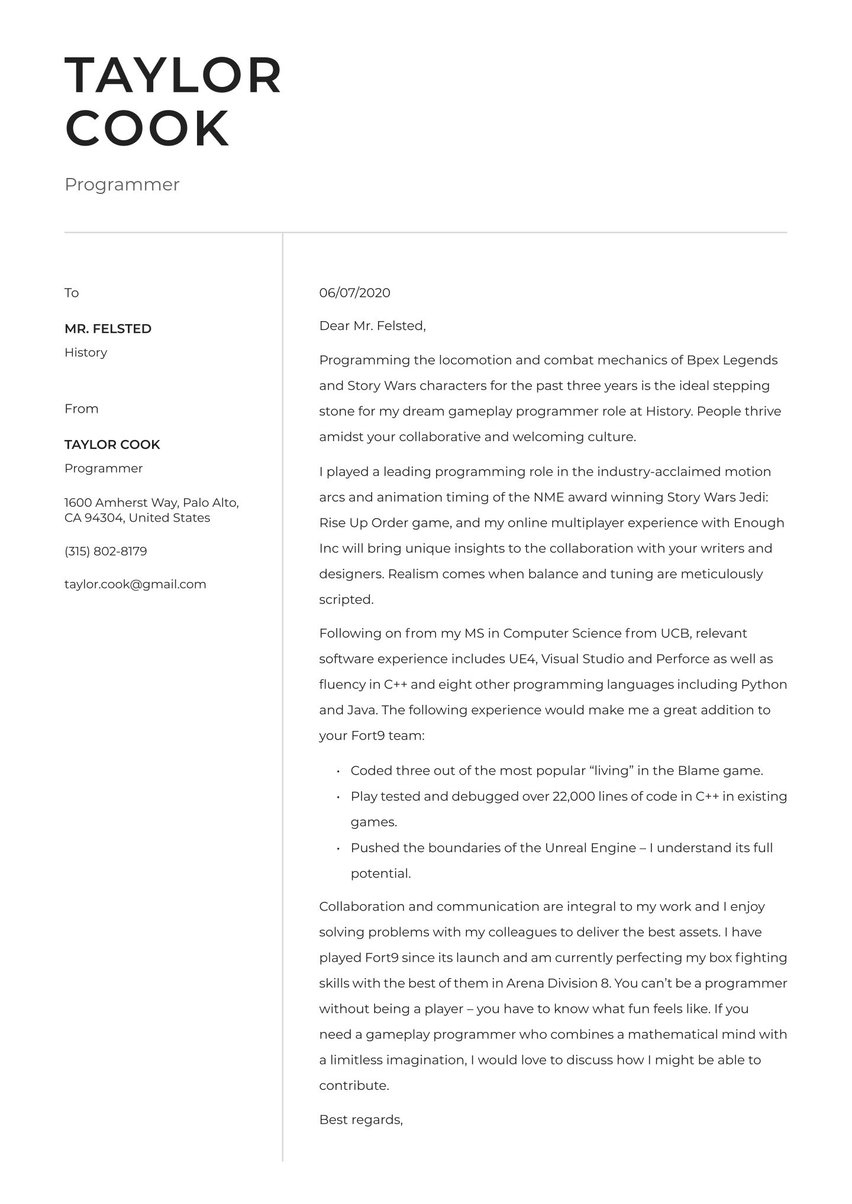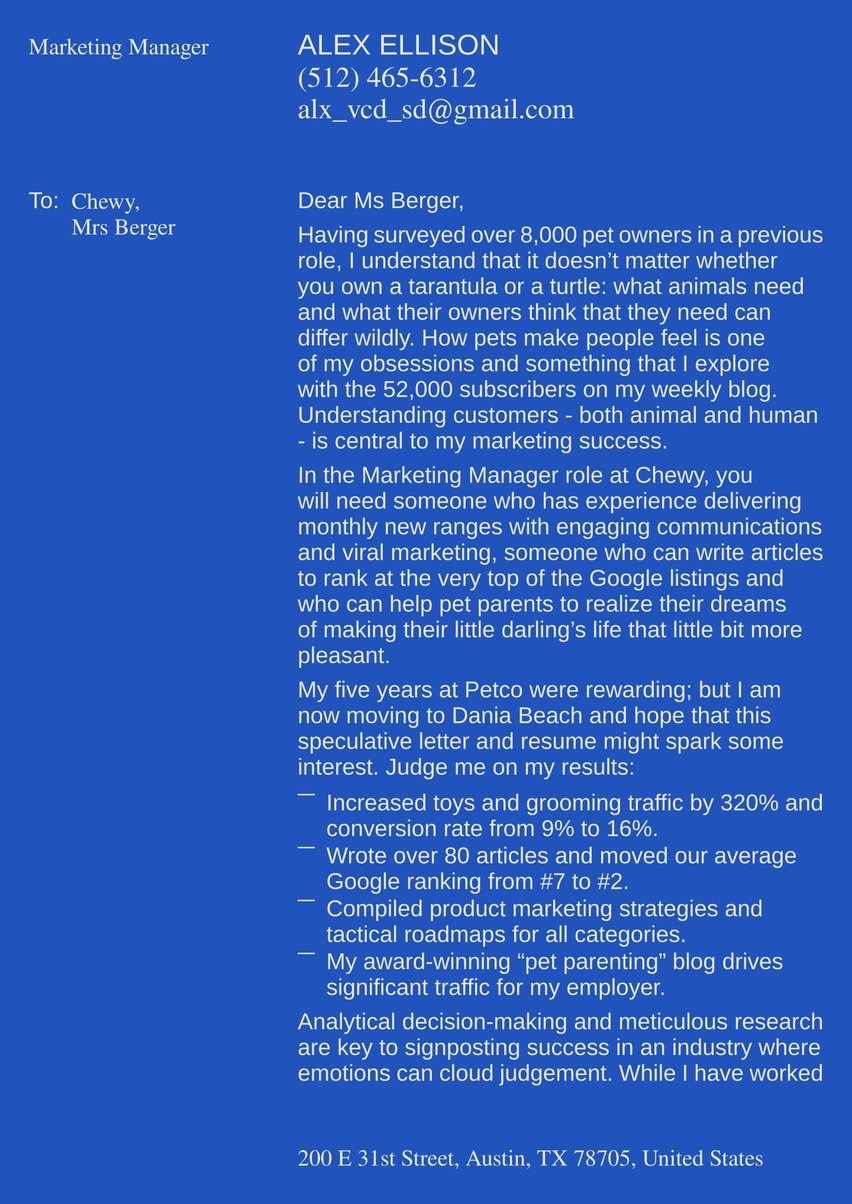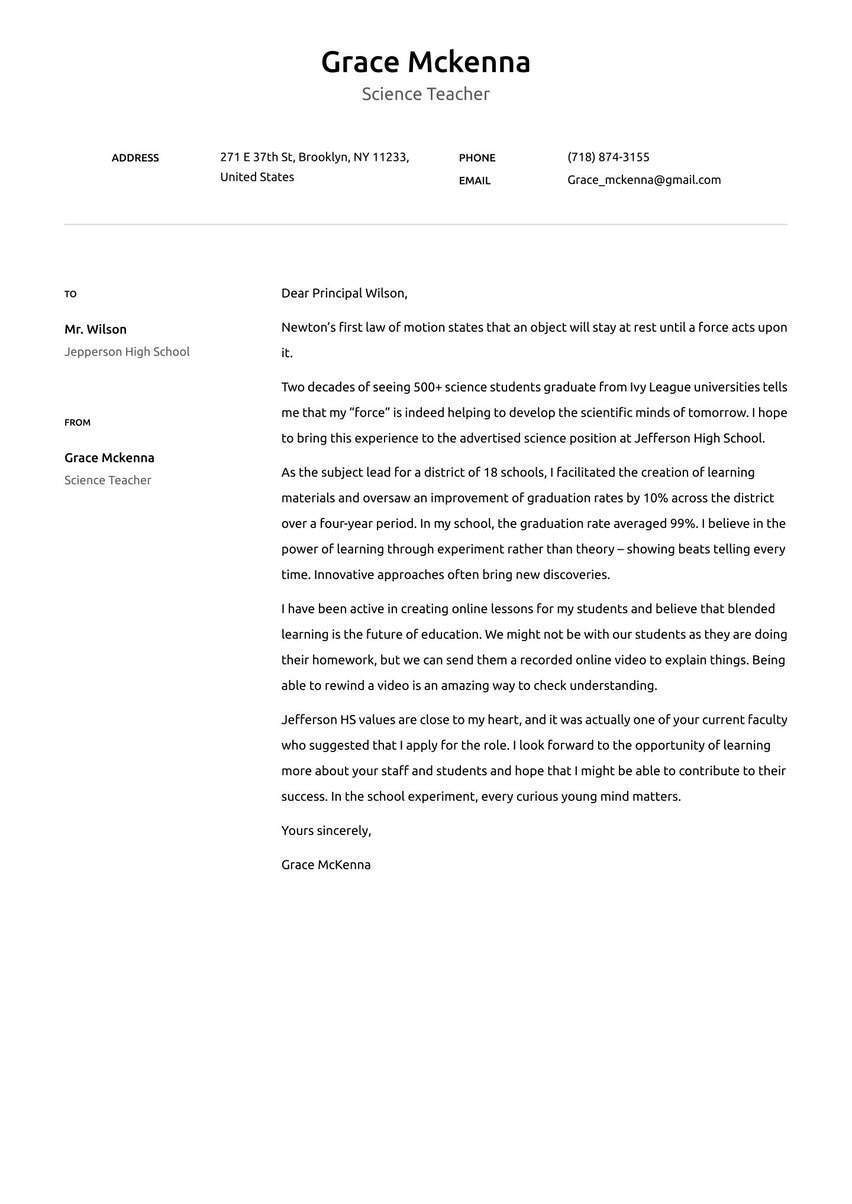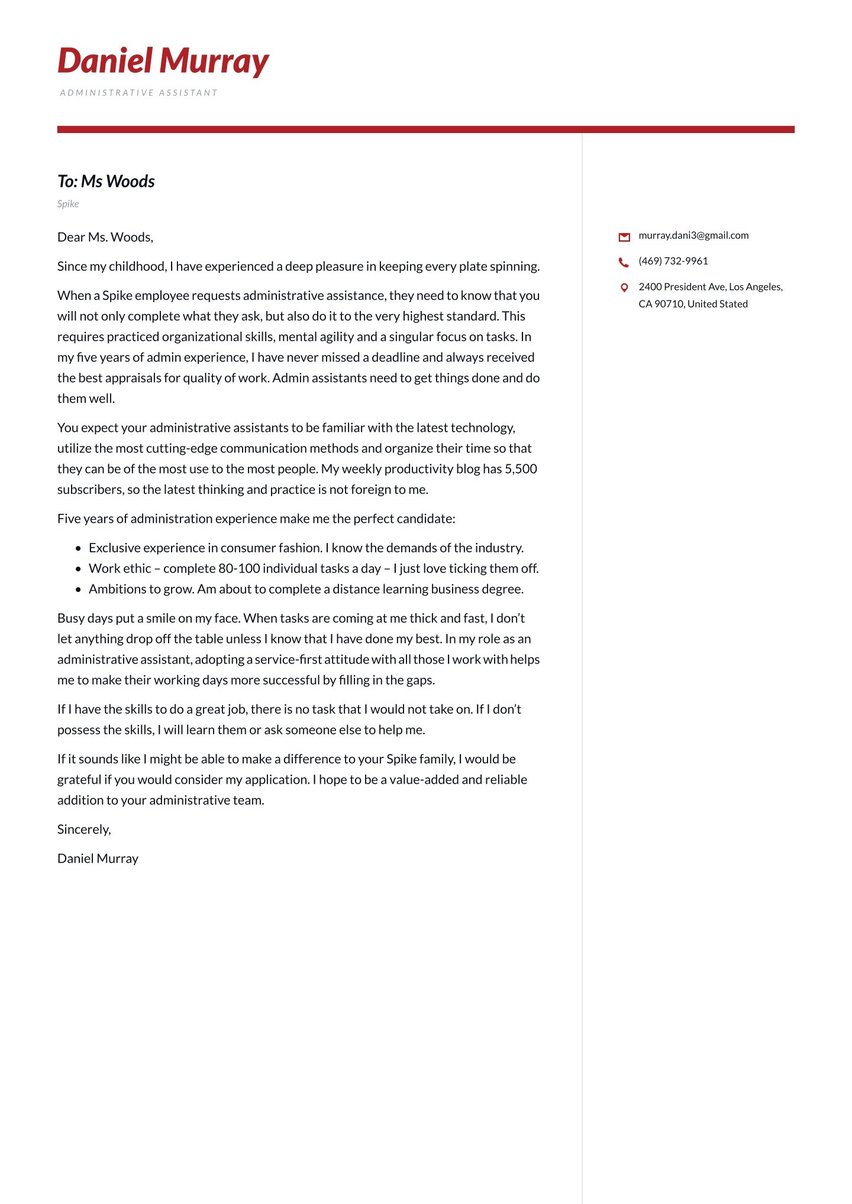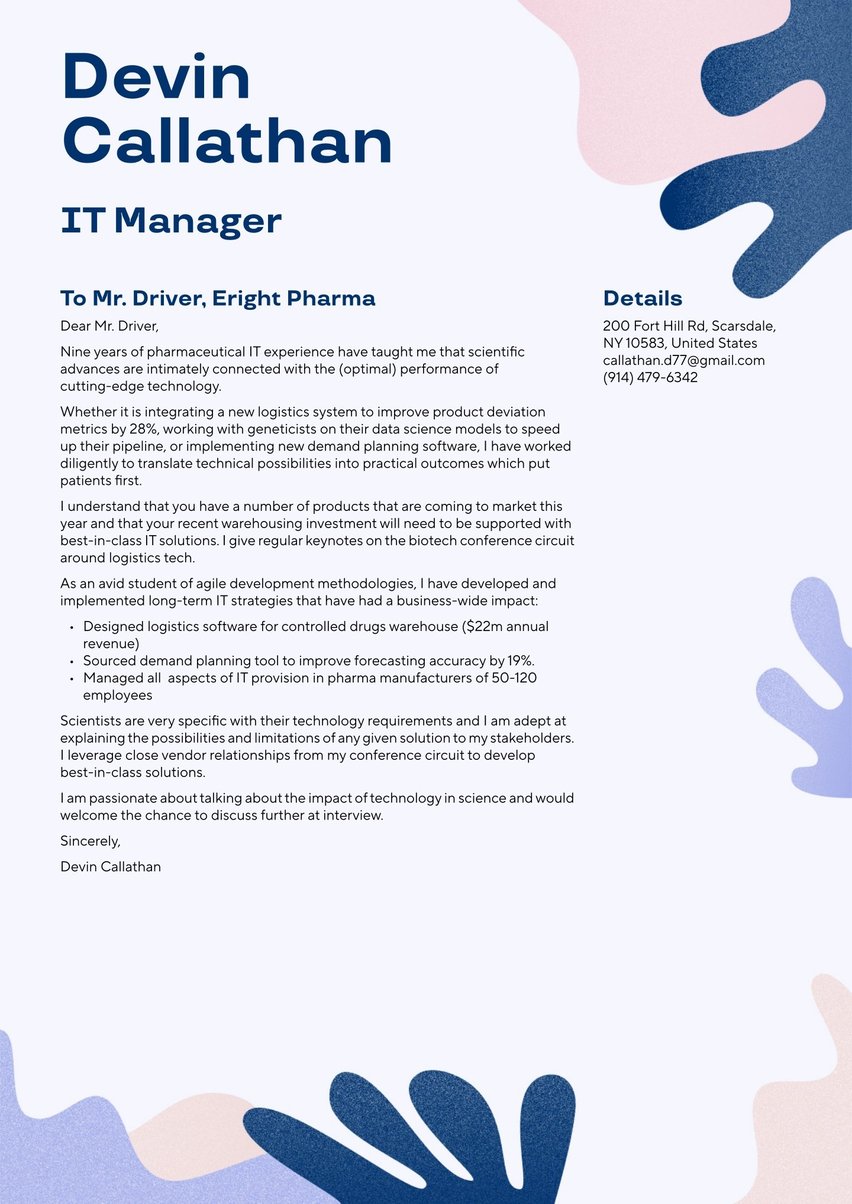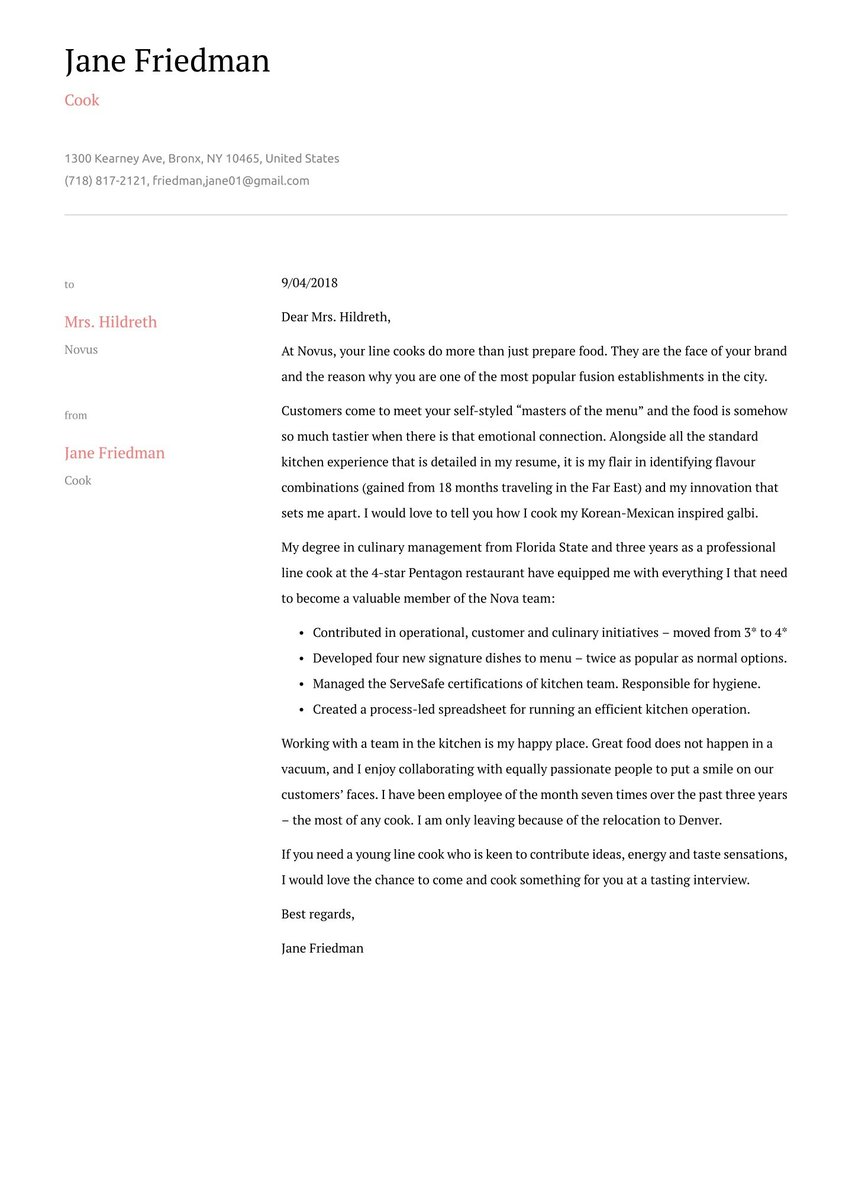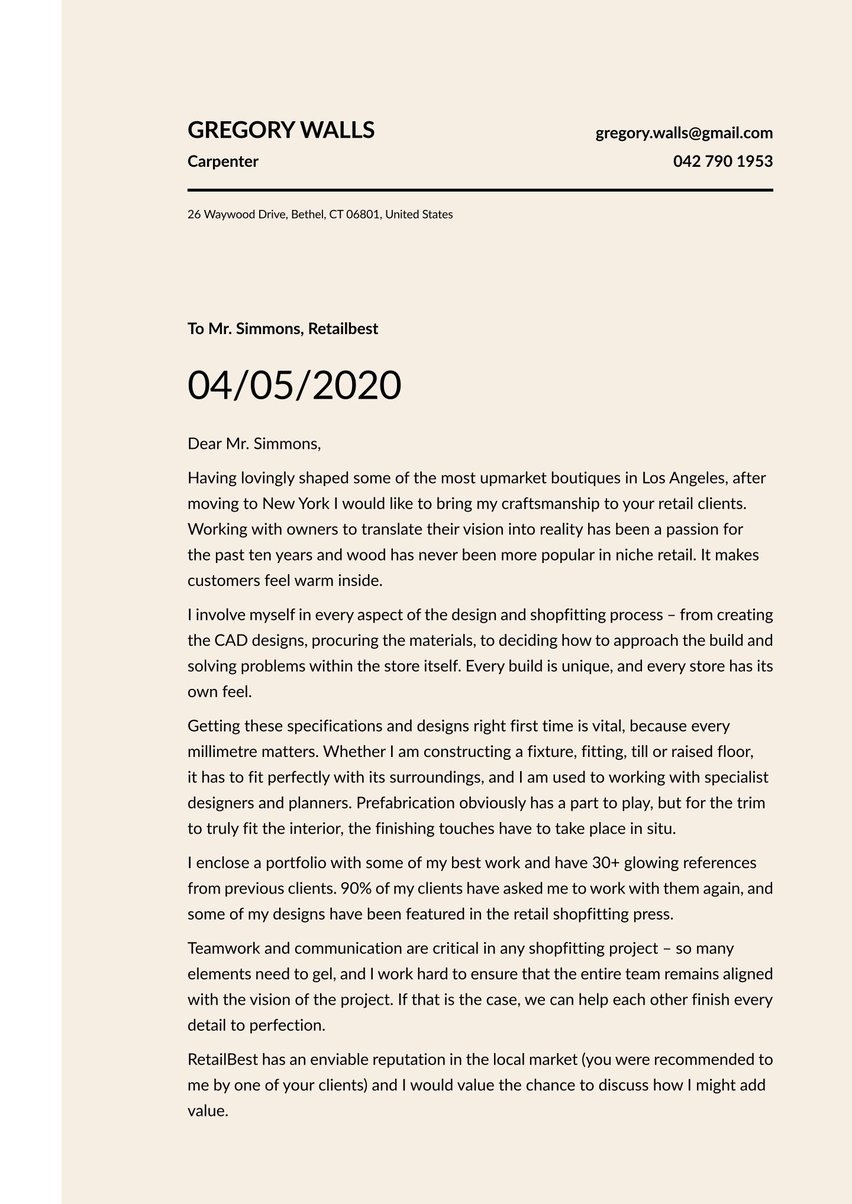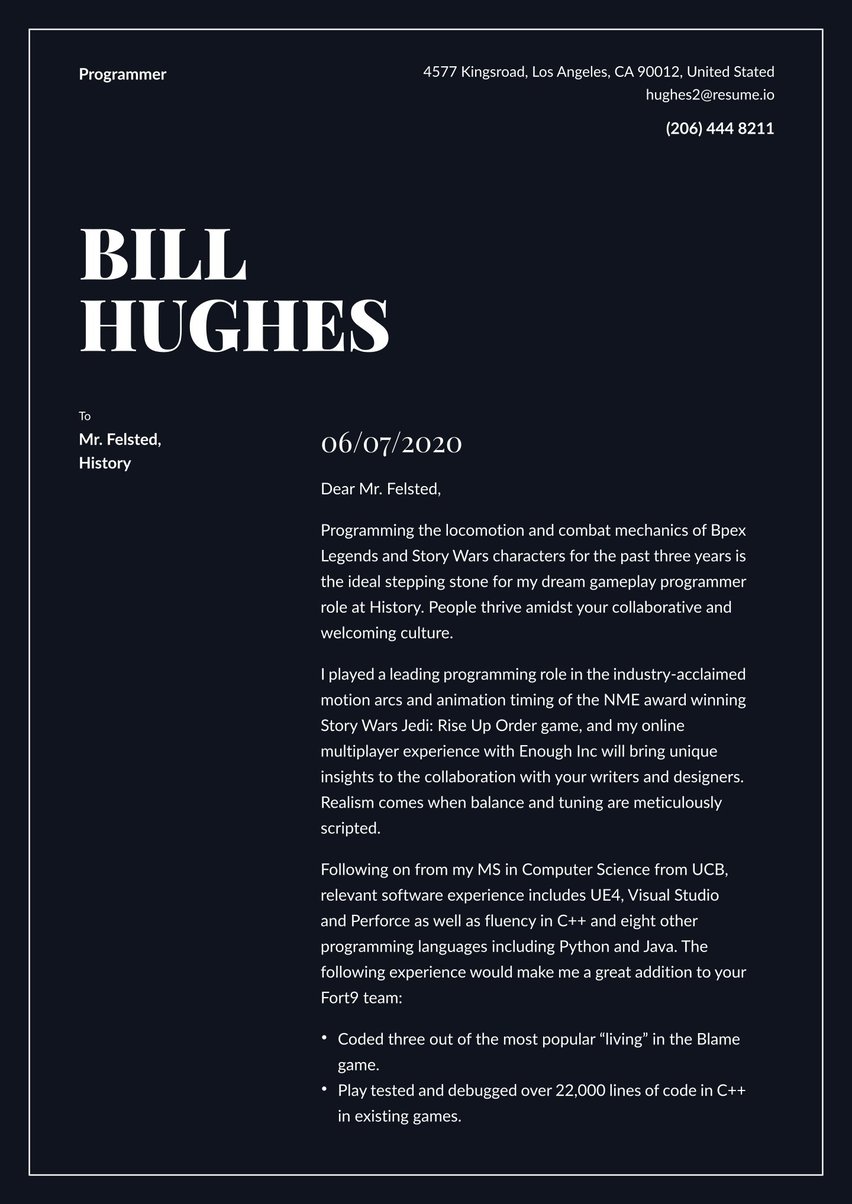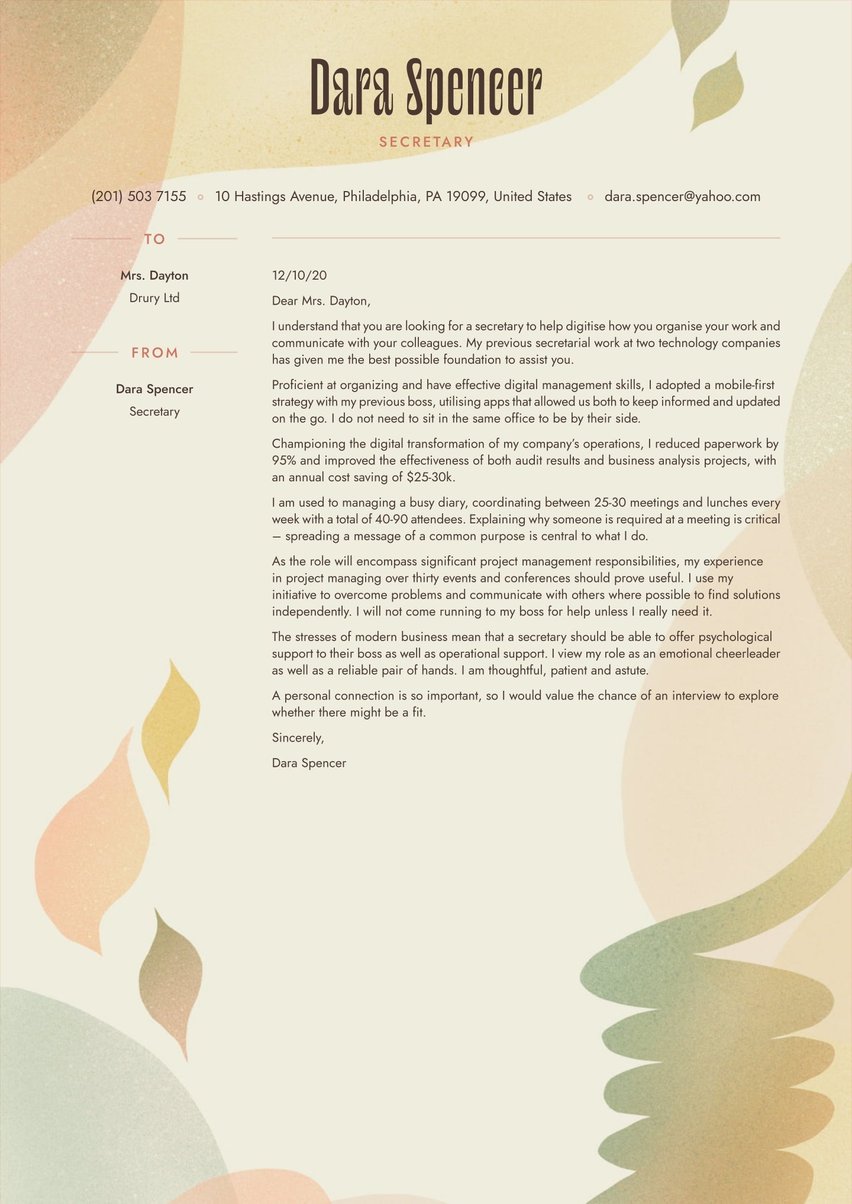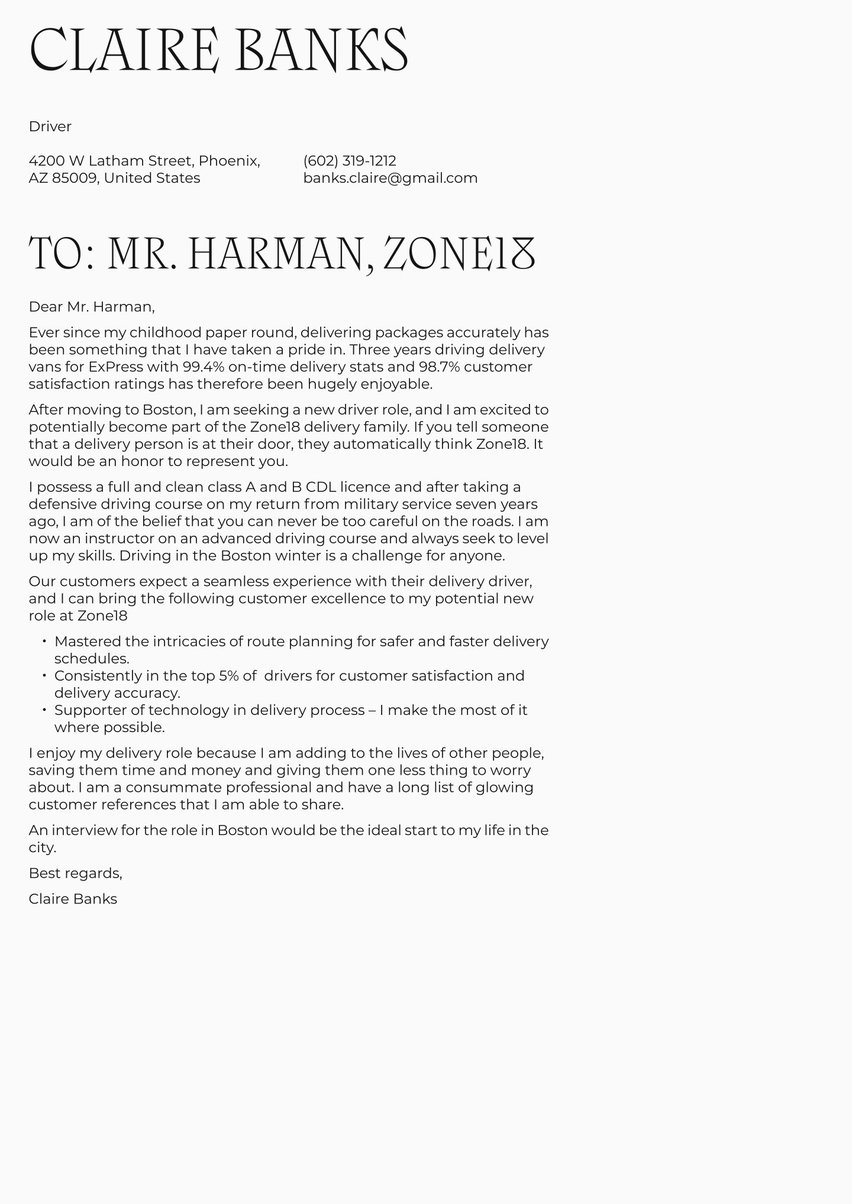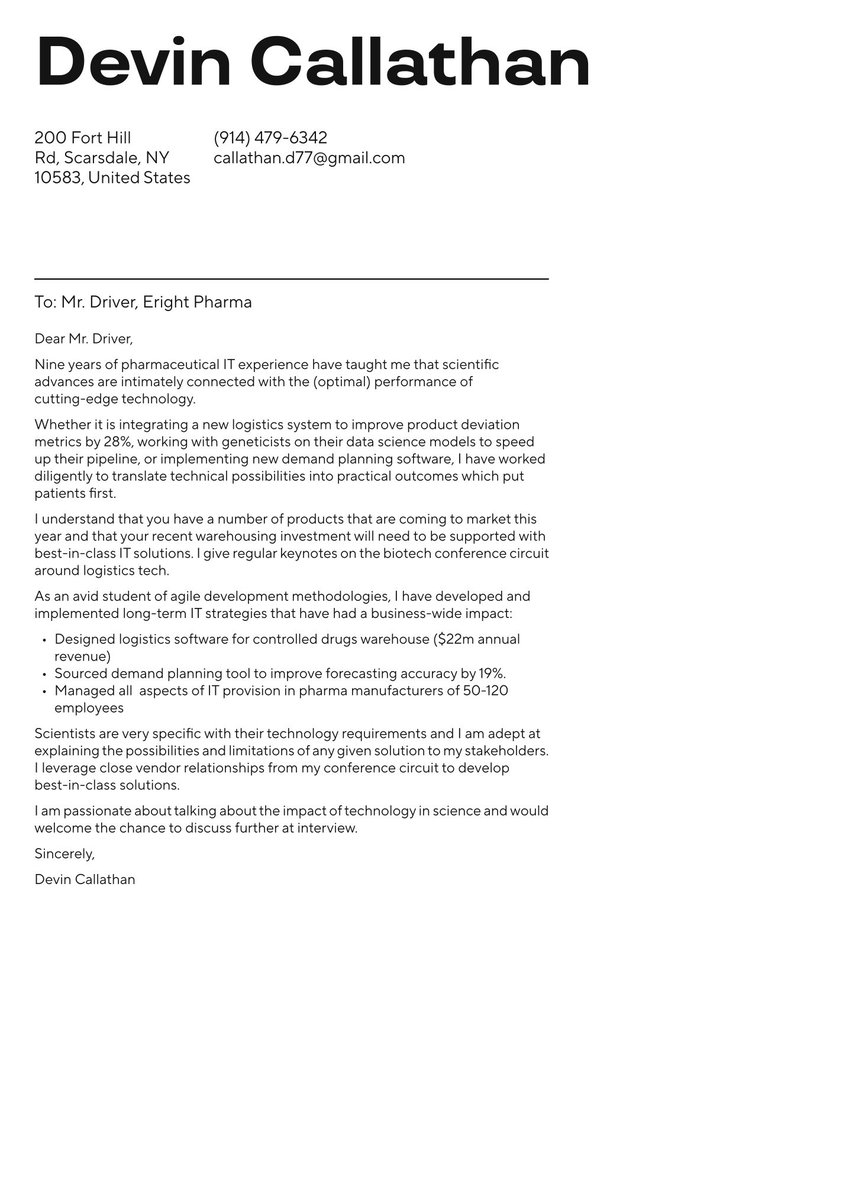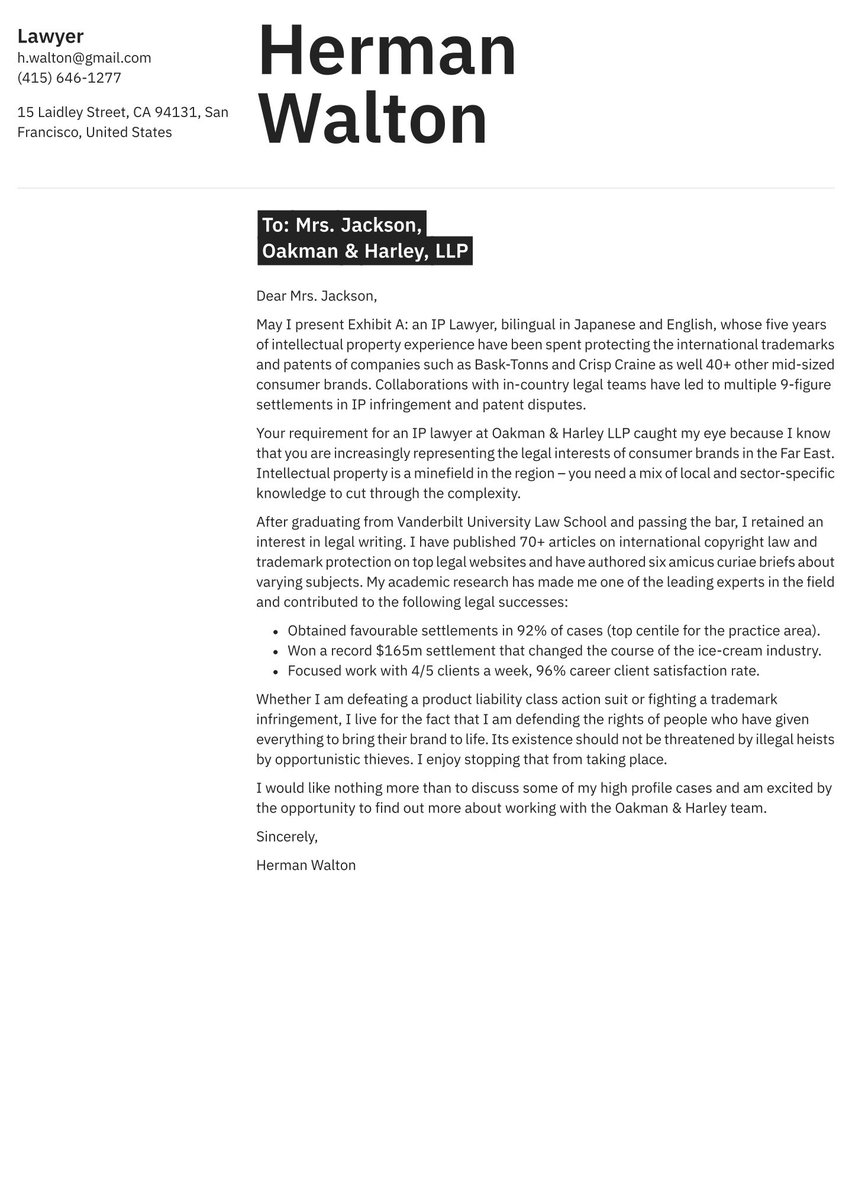If you’re a professional writer in search of work, writing a one-page cover letter may seem like something you could do in your sleep. And there’s no question that if you’re a good writer, you have a leg up on people in thousands of other occupations who also need to write a cover letter.
But you should also consider that your cover letter is actually a demonstration of your ability to do your job. As a writer, you have a higher bar to clear. Nuclear physicists don’t necessarily have to prove they’re great writers, but you do.
And you should expect zero tolerance for error from prospective employers. If you can’t write 400 words without a typo, you may be in the wrong business.
According to the Bureau of Labor Statistics, writers and authors in the U.S. in 2020 earned a median salary of $67,120 a year, or $32.27 an hour. But many writers may see these stats and say, “I wish.”
Also, according to the BLS, the number of jobs in this field from 2019 through 2019 is, unfortunately, expected to drop 2%! You are well aware of the decline of print, with newspapers and magazines instituting massive layoffs, if not closing their doors or switching to online-only formats. Book publishing is also in decline.
And yet, web and multimedia publishing keep growing. There are well over 1 billion websites in the world, though less than 400 million of these are active. But over 500,000 new websites are created every day.
There are few fields where so many aspire but so few succeed. We can only guess how many unpublished books and unproduced scripts are languishing on writers’ home computers. And of course there are countless unpaid bloggers in the world. Even among writers who earn an occasional paycheck, few find full-time work. Many writers are self-employed freelancers, and those who can find 40 hours a week of paying work are few.
All of these websites, obviously, aren’t hiring writers, but all of them need good writing. And savvy website creators understand that one of the best ways to drive traffic to their sites is to add fresh content frequently.
So, we trust you’ve chosen this field with your eyes wide open, and you’re prepared to rise above the competition for a pool of jobs that isn’t expected to grow. You’ve come to the right place. Resume.io is a global leader in providing professional templates for resumes and cover letters, as well as occupation-specific advice on how to prepare them.
This article will explore how a professional writer should prepare a cover letter. But first, you may want to review our guidance on how to prepare a resume, because you’ll need one. It’s also not a bad idea to prepare a list of links to your published work, in case there isn’t room for that on your resume (fortunately, our resumes also allow for an interactive portfolio section).
But for now, let’s talk about that cover letter. Here’s what we’ll discuss:
- Why a cover letter is essential for a writer
- How a cover letter should be structured and formatted
- What each component of a cover letter should contain
- The psychology of writing a good cover letter
- Common mistakes you want to avoid.
Best format for a writer cover letter
Many types of writing are expected to follow a basic structure, and so it is with the cover letter. These are the primary components:
The comprehensive cover letter guide offers more general advice about how to go about compiling cover letters, but below you will find specific advice on how to maximize the effectiveness of each specific letter paragraph and section.
This writer cover letter example is a good foundation to develop your own professional application:
Dear Mr. Underhill,
Writing press releases and PR content for the electric car industry is my way of saving the planet. Gently influencing all those owners of gas-guzzling SUVs to move towards a more sustainable option can only be achieved through making them think differently.
Over the past four years at Sihon, I have crafted the words for some of the most engaging ads, commercials, articles and speeches in the company’s history. I regularly took my place at the executive top table because they wanted me to translate their vision into compelling messages for future customers. As their Lead Writer, they saw me as their mouthpiece.
My writing was instantly measurable in the sales figures. After the release of one long-form article in the New York Paper, sales spiked 22% over the next month. Choosing the words to fit the motivations of buyers matters when you are seeking to change their habits. As the pioneer in the industry, Selpa have converted many of the willing believers. Five years later it is time to work on the sceptics. Great writing will be at the center of that endeavour.
If I join Selpa, I hope to build on some of my proudest career moments:
- I won fifteen awards over three years from the main three PR industry bodies.
- “Living in the Sihon e-Revolution” – widest reach for an article in Hisson PR history
- U.S. PR activity attributed to global sales growth of $250m over three-year period.
Working for Selpa has long been an ambition. You are the company to follow, and while I enclose my Sihon writing portfolio, I also include a couple of pieces that I would have written for your recent Mark 7 release. I know that my words can make a difference for you.
I would welcome the opportunity of an interview to learn more about your PR team.
Sincerely,
Allen Navarro
Let’s talk about what each of these should contain.
Here are a few more examples in the Marketing cover letter category:
- Digital Marketing cover letter sample
- Marketing Manager cover letter sample
- Marketing cover letter sample
- Social Media Manager cover letter sample
- Marketing Coordinator cover letter sample
- Event Coordinator cover letter sample
- Public Relations cover letter sample
- Event Manager cover letter sample
- Marketing Assistant cover letter sample
- Brand Ambassador cover letter sample
- Copywriter cover letter sample
Cover letter header
Also known as a letterhead, the header is the space at the top of your letter containing your contact information. It should generally list your name first — often in a larger font size than the rest of the text — followed by your occupation (such as “Writer,” or perhaps mentioning your specializations: “Tech Writer, Copywriter, Blogger”).
The header should include your address, phone and email, and some people also choose to include their Twitter handle or LinkedIn contact. Snail-mail addresses are sometimes considered unnecessary, though you should generally include one unless there’s a reason not to.
The header is also an important design element, allowing for some creativity in layout, fonts, use of color and white space. You can review the headers in the free cover letter templates at resume.io to give you some ideas.
The goal of your header: Create a memorable design and clearer include your contact details.
Align document styles
Your resume and cover letter should use the same font, font sizes and formatting styles, and in fact the headers on the two of them should be very similar if not identical.
Using the same styles on these two documents shows your attention to detail and gives you a “visual brand.” It shows that you understand the importance of coherent design and that you aren’t just slapping these documents together using random styles.
Also, if your cover letter and resume look nothing alike, the reader may suspect that you’ve written a new cover letter but pulled an old resume out of your files. You have to submit only two pages, so make them a matching set.
Cover letter greeting / salutation
This is the line that traditionally reads, “Dear Mr. [or Ms.] [Last name here].”
The era of email has ushered in more informal versions of the word “Dear,” such as “Greetings” or “Hello,” followed by the name. And using a first name is more common nowadays than it used to be. But you should beware of being too informal unless you happen to know the person you’re writing to.
The goal of the cover letter greeting: Open warmly and personally, but keep in step with the culture of the business you are applying to.
Always strive to address your letter by name to an actual hiring manager or recruiter. People like to read their own names, and it will make your letter more personal. In fact, neurological research shows that the human brain has a positive neurochemical reaction when a person hears/sees their own name.
It also shows your professionalism that you’ve gone to the trouble of finding out the name of the person responsible for hiring at the company you’re targeting.
Cover letter introduction
Now it’s time to do what you do best — write! It’s been said that the cardinal sin for a writer is to be boring. So you want to write a first paragraph that hooks readers immediately and makes them want to read on.
The aim of the introduction: Identify the job you’re seeking and provide a preview of your qualifications, using provocative language free of clichés.
As a technical writer with 10 years of experience providing software documentation for a range of leading companies, I’d like to apply for the job you’ve listed seeking a tech-savvy writer for your IT department.
Cover letter body
The central portion of your cover should be the “meat and potatoes” of your pitch, where you list all of the most compelling reasons that you would be a great hire.
This will almost always include your work experience, especially that which is most relevant to the job you’re applying for. Be specific about your accomplishments at past jobs, using facts and figures wherever possible. And use anecdotes to describe tough challenges you’ve faced and how you resolved them to the satisfaction of the client.
If you have a university degree that has prepared you to excel in this field, you can also mention that here, along with any relevant certifications or awards. You may also note here that in addition to a resume, you’re attaching a document with links to some of your published work.
You may be aware of specific challenges the company is facing, and if you can explain how your contributions would help address these challenges, all the better.
The goal of this section: Use your writing skills to elaborate on your achievements.
My writing was instantly measurable in the sales figures. After the release of one long-form article in the New York Paper, sales spiked 22% over the next month.
How to close a writer cover letter (conclusion and sign-off)
In the last paragraph of your letter, you might include some kind of summary of what you’ve already said, and perhaps a thank-you to the recipient for taking the time to consider your application.
But most important, your conclusion should contain a call to action to plant the idea in the reader’s mind that you are looking forward to continuing this conversation.
Close with a “Sincerely,” “All my best,” “Thank you” or the equivalent, and type your full name. If sending this letter electronically, you may also choose to insert your scanned signature.
The aim of the conclusion: End with a call to action and a reminder of what an amazing addition to the team you would be.
Would you mind if I call you in the next couple of weeks to inquire about arranging an interview?
OR
I’m always reachable using the contact info provided above, and I look forward to hearing from you soon to discuss how I can be of service to your company.
Cover letter layout and design
Design matters, and you’ll need to adjust your cover letter format according to established guidelines so that it looks as good as it reads.
- Fonts: Use a font that’s easy to read, avoiding exotic or splashy fonts that call attention to themselves. Design experts favor fonts that emphasize readability such as Verdana, Georgia, Helvetica, Arial, Open Sans and others.
- Font size: Try to use a font size of 11 or 12 points, and if your letter doesn’t fit on one page, you can make the font as small as 10 points, but no smaller. To hold your letter to one page, trim the fat from your content before you resort to formatting solutions to squeeze it all in.
- Text alignment: Your text should be aligned left, not justified from margin to margin.
- Paragraphs: Do not indent your paragraphs, but leave a space between them. And keep your paragraphs fairly short to avoid big blocks of uninterrupted black text.
- Margins: Include a one-inch margin on the top, bottom, left and right of your letter.
Save as PDF: In most cases, your cover letter should be saved as a PDF that is attached to an email along with your cover letter, or uploaded through the application system provided by the employer. The advantage of a PDF is that it will preserve your formatting so that your letter looks the same on your reader’s computer as it does on yours. Some employers (and their electronic application systems) may require a Word file, but if it’s not requested - stick to a PDF to preserve your structured visuals.
Use a template: If you start with a professionally designed cover letter template, all these formatting issues will be taken care of for you. All you have to do is fill in your own information, and you’re done.
The psychology of good cover letter writing
If you were in the restaurant business, you wouldn’t just serve your customers any dish you want — you would serve them the dishes they want.
And so it is in writing a cover letter: You need to anticipate what’s important to the person you’re writing to, not what’s important to you.
Always remember that a cover letter should never be about how you deserve a job. It should be about the needs of the employer and how you can help solve their problems or empower the business/team capabilities. So you need to try to put yourself in the shoes of the hiring manager.
Once you’ve identified an employer you want to approach, you need to study your target. Remember all the great military conquerors in history who never studied their targets? No, you don’t, because there aren’t any.
Scour the company’s website and any other communications it issues (including its social media accounts or even press releases and CEO interviews). What values does the company emphasize? What tone of voice does it use to address the public? It may be extremely formal, disarmingly casual or anything in between. Your own language should match the style and tone of the company you want to work for.
Consider your position relative to the company to help determine how to strike the right tone. Are you seeking an internship fresh out of high school, or do you have years of experience that will legitimately help this company compete in the marketplace? Make your approach in a tone of voice appropriate to your skills — confident and assured, but never arrogant or presumptuous.
Common mistakes in a writer application letter (and how to avoid them)
If you want to write a cover letter that ends up in the trash, that’s pretty easy. You can use all the “tools” listed below. Alternatively, you can choose to rise above the competition and avoid these job search pitfalls. Here are some of the common mistakes that people make in writing cover letters and which turn off recruiters:
- Typos. In a field where you’re presenting yourself as an outstanding writer, one simple typing mistake can be a dealbreaker. Make sure to use online resume and cover letter builders that have an effective spell-check function.
- Misspellings, bad grammar and other writing errors. Beyond accidental typos, some errors can demonstrate that you’re not well versed in the rules of writing correctly. For example, you write “predominately” instead of “predominantly,” or you make errors in subject-verb agreement, or you refer to your previous company as a “they.” Minor writing mistakes may be overlooked in many fields, but your field is writing, and you can’t afford any.
- Clichés, HR-speak and fluff. John Lennon could get away with writing a song saying that he’d been “working like a dog” and should be “sleeping like a log,” but you can’t. Eradicate all clichés from your letter, as well as corporate lingo like “I’m a self-starter who thinks outside the box.” Find actual examples to illustrate your qualities, don’t just speak in platitudes. You may not be a filmmaker, but the “show don’t tell” rule still applies here. Also, beware of “fluff,” which is just fancy language that doesn’t say anything.
- Generic copy-paste letters. Every cover letter you write should be unique and targeted to a specific employer. You better believe that recruiters and hiring managers have a sixth sense for generic cover letters that are sent en-masse like a marketing email. Personalize every resume and cover letter you write.
- Formatting and design errors. Unreadable fonts, tiny margins or huge, blocky paragraphs can disqualify your letter at a glance. This is why we always recommend using a professional template.
Key takeaways
- Professional writers face variable pay rates and a flat job outlook, which is why they need an outstanding resume and cover letter to compete in today’s marketplace.
- A good cover letter is essential, among other reasons, because it’s an actual demonstration of a writer’s job skills.
- Cover letters must be structured and formatted correctly, both to ensure that all relevant information is included and to avoid any potential disqualifiers.
- Put yourself in the seat of the hiring manager, and deliver the letter that s/he is looking for, not just the letter that’s easiest for you to write.
- Avoid potential missteps by using a professional cover letter template.
The field-tested templates at resume.io have been proven to work, have been tested by recruiters and our online cover letter builder makes it fast and easy to create a professionally formatted document.
The only thing we don’t do for you is write the letter (though we do assist with pre-made cover letter samples).
Best of luck in your job search, and happy writing, you’ll get that job in no time!


